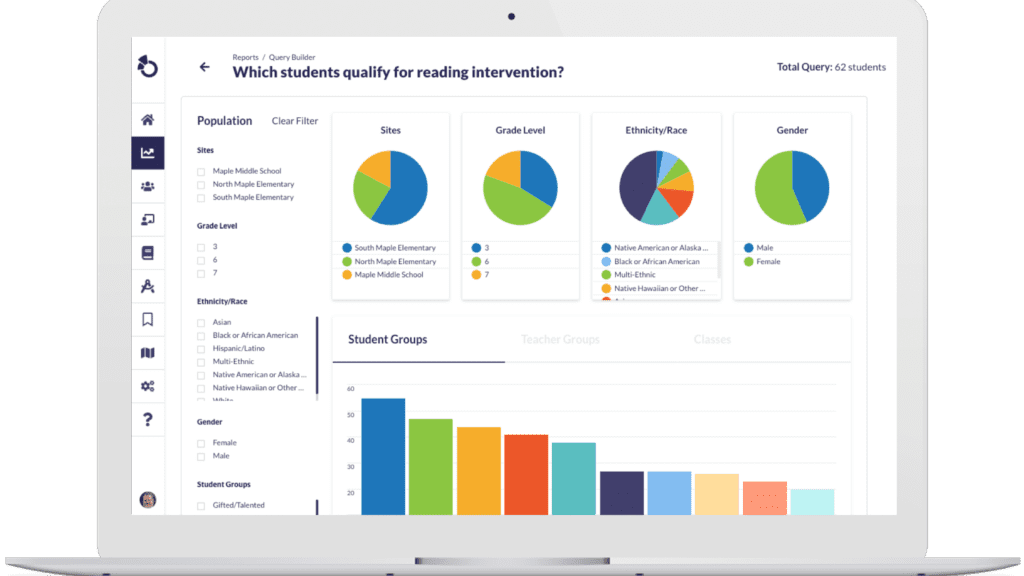Some PLCs are game-changers. Others? Just another meeting on the calendar.
So, what separates the high-performing teams from the ones just going through the motions?
At Otus, we’ve teamed up with FIRST Educational Resources, a professional development partner known for helping schools build strong, sustainable PLCs. Their framework, used by schools nationwide, offers a clear picture of what high-performing PLCs do differently and why it works.
Let’s break it down.
Before we dive in… see the difference for yourself
Check out the infographic below to get a side-by-side look at the mindsets, habits, and outcomes that set low-performing and high-performing PLCs apart. It’s a quick scroll, but it says a lot.
From “When are we going to collaborate about something that matters?” to “We focus on what matters most: student needs, instructional strategies, and real results,” you’ll see what’s possible when PLCs work the way they’re meant to.
Then, keep reading to unpack the five pillars that make it happen, straight from the FIRST Educational Resources’ framework.
What is a low-performing PLC?
You know the type. Meetings that feel more like vent sessions than learning opportunities. No clear goals. No follow-up. And definitely no visible impact in the classroom. Oof.
Here’s what often shows up:
- Lack of structure or agenda
- Dominant voices drowning out others
- Minimal use of student data
- “Collaboration” that’s really just coordination
- No accountability for next steps
These PLCs tend to feel like a waste of time, and for good reason.
But the good news?
It doesn’t have to stay that way.
What high-performing PLCs do differently
They’re focused. Energizing. And clearly connected to student growth.
The secret isn’t magic. It’s mindset + structure + support, built on five key pillars.
Let’s dig in.
1. Collaboration
High-performing PLCs don’t just meet. They collaborate with purpose.
That means:
- Working toward shared student goals
- Valuing every voice at the table
- Bringing student work, data, and ideas (not just complaints)
Low-performing PLCs = Side conversations, vague plans, or “we talked about it” with no follow-through.
High-performing PLCs = Collective problem-solving, strategy swapping and reviews, and accountability partners.
To put it simply, collaboration isn’t about being in the same room. It’s about being on the same page.
2. Clarity
You can’t hit a target you can’t see.
High-performing PLCs have crystal-clear answers to:
- What are the essential standards and targets all students must reach?
- What does success look like in both student learning and our teaching practices?
- How will we know if students got it—and what will we do if they didn’t?
- How do we design high-quality assessments that reflect mastery?
- How do we communicate progress with students and caregivers?
That clarity drives instruction, intervention, and enrichment. Without it? You get a lot of talk and very little traction.
In other words, vague goals = vague results.
3. Consistency
The best PLCs aren’t just strong once in a while. They’re strong every time.
They follow shared norms. Stick to protocols. And come prepared.
Sure, flexibility matters, but structure is what protects the team’s time and purpose.
Ask yourself:
- Do our meetings feel predictable in a good way?
- Are we using our time the same way across grade levels or content areas?
- Are facilitators supported and trained?
Inconsistent PLCs lead to inconsistent results for students. Full stop.
4. Capacity
High-performing PLCs grow people.
They create space for learning: new strategies, better tools, instructional coaching, and peer observations, just to name a few. Every educator leaves the meeting sharper than when they walked in.
Low-performing teams? Not so much. Those meetings often feel like a brain drain.
But when PLCs intentionally build capacity:
- New teachers feel supported (not overwhelmed)
- Veteran teachers stay energized
- Everyone levels up
At the end of the day, if your PLCs aren’t building teacher capacity, they’re just filling calendar space.
5. Commitment
This one’s the glue.
High-functioning teams aren’t just compliant, they’re committed. To each other. To the process. And most importantly, to do what’s best for kids.
They show up. They follow through. They believe in the work.
And that belief? It’s contagious.
District and school leaders, here’s your move: build systems that inspire commitment and support it. That’s how you go from “ugh, another meeting” to “we can’t wait to meet.”
What about data in PLCs?
High-performing PLCs don’t just gather data – they act on it.
They analyze student performance, identify gaps, and adjust instruction in real time. And they certainly don’t wait until the end of a unit to do it.
Progress monitoring is embedded in their routines, helping them:
- Track student growth
- Personalize instruction
- Catch problems early
Platforms like Otus help organize, unify, and visualize every single student data point so teams can make informed decisions, fast.
When used well, data becomes an incredible tool for empowerment.
Want to build better PLCs?
Start with these five pillars. Look at where your teams are strong – and more importantly, where they need support.
The difference between low and high-performing PLCs isn’t just what they do.
It’s what they believe.
And what they build, together.
Watch How Otus Supports PLCs
Otus gives PLCs the tools they need to collaborate effectively, analyze data, and drive student growth.
Related Resources
Request a demo!
See exactly how Otus can help your school accelerate student growth and improve student outcomes – all while saving educators time.






